
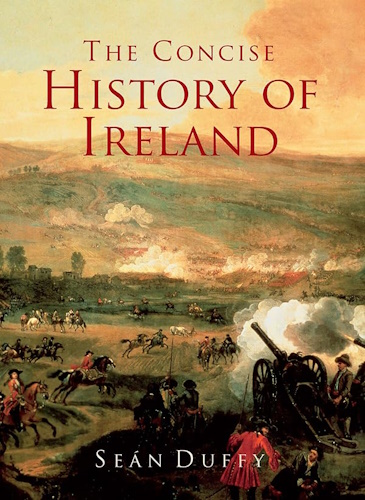
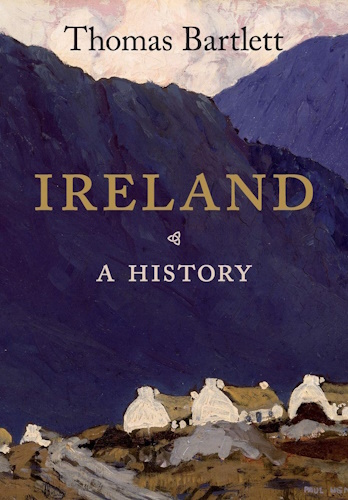
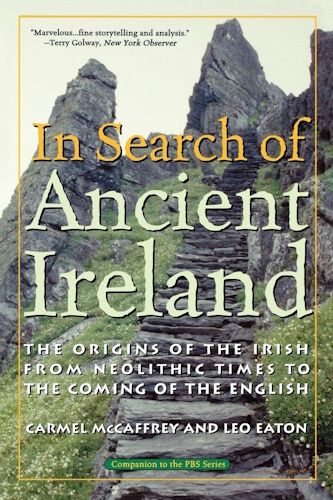


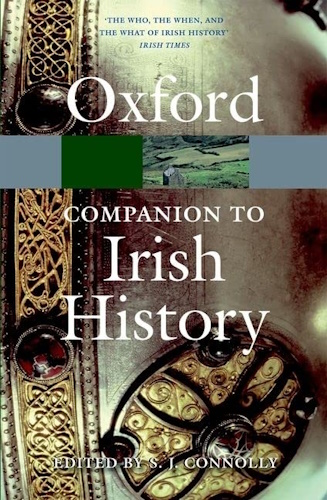
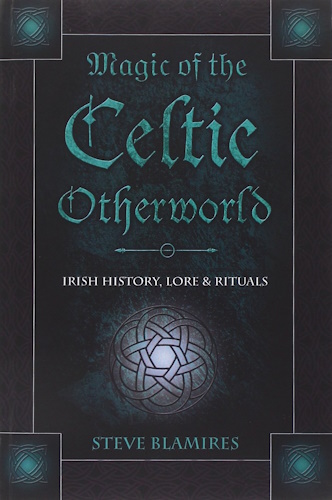
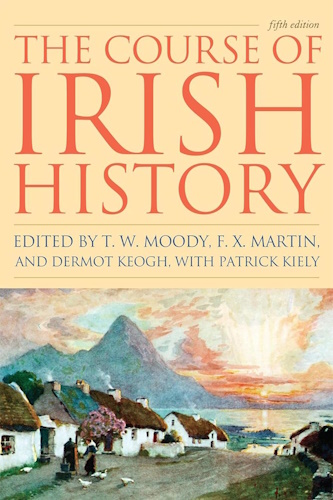
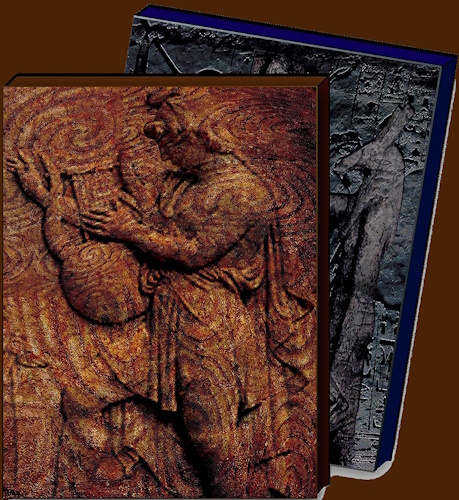
Atonism and the Cult of Mithras
Appendix XIII to Volume II
of
The Irish Origins of Civilization
by
Michael Tsarion
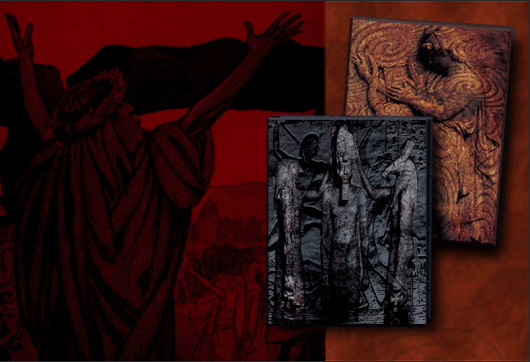
![]()
![]()
Thou has saved us by shedding the eternal blood - Mithraic Dictum
...we are forced to conclude that Sol Invictus-Mithras and Christianity were not two religions in competition, as we often read, but were two institutions of a different nature that were closely connected...this is practically a certainty - Flavio Barbiero (The Secret Society of Moses)
Atonism has adopted strange guises throughout the long ages since it was born in and subsequently expunged from Egypt. As revealed in my books and sites, Atonist elements are conspicuous in Judaism, Culdeanism, Christianity, Zoroastrianism, Gnosticism, as well as in Masonry and Templarism. I have also shown that Atonism was a corruption of Druidism and Amenism, the ancient stellar theologies. It was also a corruption of ancient Persian traditions well known throughout the Levant.
Both the Gaels of Ireland and Iranians of Persia were descended from the Scythians who were, in my opinion, nobles in Egypt and other lands. The Scythians were also known as the Saca, from which we derive the term Sage. They were the progenitors of the Saxons, Medes and other branches of the Arya, such as the Iranian Magi. They are to be considered the Druids of the Levant, three of whom allegedly appeared in the stable at Bethlehem bearing gifts for Jesus; the whole story of Jesus being based on much earlier myths pertaining to Mithras and Zoroaster. ( Here for more...)
.
The Aryans
Iran (like Ireland) is a word alluding to those Aryans occupying the Middle East. It was their lore and traditions that were unrighteously appropriated by later entities, namely Judaism, Christianity, Zoroastrianism, Hinduism, Buddhism and Taoism, etc.
The Cult of Mithra or Mithras (of which Zoroastrianism, Mazdakism, Manicheanism, Sufism and Sol Invictus were less pure variants) was prominent long before the periods of Roman imperial expansion and rise of Christianity. Although it had been a pure and noble philosophy for centuries, after the destruction of the Persian Empire by Alexander and rise of Christianity, it eventually became adulterated with spurious accretions. This was chiefly due to the need for secrecy and also due to the decadent priesthood which sought to offset the influence of Rome and Christianity.
After the rise of orthodox Islam (sixth century AD) the Cult of Mithras was forced underground, and - like so many august traditions - eventually degenerated and morphed into the more popular school of Zoroastrianism. After this decline, during the reign of the Parthians, I believe it was further corrupted by Setian-Atonists. (Here for more...)
The symbolism employed by Masons and other secret societies - such as the infamous Bohemian Society and Order of the Skull and Bones - derives from Zoroastrianism, the degraded form of Aryan Mithraism. Similarly, what we know as Culdeanism and Christianity are degraded forms of both Irish Druidism and Persian Mithraism.
Although the term Druid is local, their religion was of deep root and a distant origin. It was of equal antiquity with those of the Persian Magi, the Chaldeans of Assyria, and the Brahmins of Hindustan. It resembled them so closely in its sublime precepts, in its consoling promises, as to leave no doubt that these nations, living so widely apart, were all of the same stock - W. Windwood Reade (Veil of Isis)
Col.Vallencey has proved, as clear as the sun at noon, that the ancient gods of the Greeks and Romans came from the Hyperboreans – Godfrey Higgins
As the Jews had no writings prior to the time of Ezra or Jeremiah, it is now believed that many of the doctrines incorporated in their sacred books were borrowed from Persian, Indian, and Egyptian sources - Eliza Burt Gamble (The God-Idea of the Ancients or Sex in Religion)
By comparing the sacred writings of the Persians with the history of the events connected with the conception and birth of the mythical Christ as recorded in the New Testament, the fact is observed that the latter appears to be closely connected with the central figure of Persian mythology - ibid
The Kabala
Of even greater importance is the fact that the Mithraic cult was in fact that of his mother - the goddess Cybele. Indeed Mithras was androgynous and frequently worshiped in female guise. In Persian the word mitra pertains to females.
From Cybele we get the terms Cabala and cabal (meaning secret society). Known throughout Europe, the Levant and Asia in numerous guises and names, she was probably the most important goddess figure of antiquity, particularly to those within secret enclaves. She may have been a transmogrified version of the Persian goddess Anahita, herself the origin of Anat, Tanit, Neith and Athene.



The Biblical Magi were Persian (Aryan) mystics and astrologers. Right from the beginning of the New Testament we are given hints of the truth. Christianity's debt to Mithraism can't be overstated. The very word magic comes from the Persians.
A tablet dedicated to Cybele has a fish and cup inscribed on it, and it is possible that fish, as well as wine and bread, was the food shared by the initiates, and that it was laid in the sacred cup or vessels which symbolized the goddess herself - Baring & Cashford (The Myth of the Goddess)
The Vatican resides on the former temple site of the Roman Sun god Mithras - Zenith Harris Merrill (Roman Catholicism)
Among the ideas which were borrowed by Judaism from the Persian religion, belonged those connected with the mediatory "Word." As the creative power of the Godhead upon earth, the expression "the Word" had already appeared in aphoristic literature. Under Greco-Egyptian influence the term "wisdom" (sophia) had become a naturalized expression for it – Arthur Dewes (The Christ Myth)

The famous image of the great solar hero Mithras slaying the bull symbolizing the old astrological "Age of Taurus." Astronomically, the image denotes the constellations of Perseus and Taurus.
This movement of the sun from the sign of Taurus into Aries was also of importance to the Atonists of Egypt.
Note that Mithras wears the Phrygian Cap which later became a seminal symbol of the eighteenth century revolutionary cells and parties that violently brought the Old World to ruin. These anarchistic groups were and are controlled by powerful Setian-Atonist societies operating outside of public view.

Roman Catholic popes and bishops wear the Mitre. This and many other leitmotifs, traditions and practices derive directly from the Persians and the Cult of Mithras. This is not to imply that the truemystical tenets of Mithraism and Druidism are embodied and practiced by the papacy. Far from it. ( Here for more...)
The supreme head of the Mithraic organization was called the pater partum, or pope, and he resided in Rome in the Vatican grotto - Flavio Barbiero (The Secret Society of Moses)

The term Baphomet connotes Mit, Met or Mithra. In this case the term denotes initiation into the cult of Mithras-Cybele or a baptism into the same. The goddess behind the god is suggested by the female breasts. This iconic hybrid is clearly androgynous, and undoubtedly derives from the Persian occult tradition.
Baptism was one of the observances in the worship of Adonis in Mesopotamia and Arabia. Those initiated in the Mysteries of Mithra were baptized - S. F. Dunlop (The Ghebers of Hebron)


A man would think the Persians learned all their magic from them- Pliny (on the Druids)
Readers familiar with my work on the Irish origins of civilization will understand the connections between the Egyptian, Roman and British Atonists, and how they gained converts and worked to secure their great but insidious World Order.
. . .
Terrorism & the Illuminati
Another recommended work on this subject is Terror and the Illuminati, by David Livingstone. Although a Christian, and not a disciple of Mithraism, Livingstone provides many interesting details into the history of Iran and neighboring lands. Livingstone covers many of the most powerful cabals and dynasties of the Middle East, those I refer to as the Eastern Illuminati.
Livingstone traces the all-important connections between these Atonist (or as he refers to them, "Judaic" or "Davidic" bloodlines) and modern royal dynasties. He deals with the elite houses of Orontid, Commagene, Herod, Sinclair, Angevin, Lorraine, Guise, Welf (Guelph), Brandenburg, Hapsburg, Merovingian, Carolingian, Stuart and Plantagenet, etc.
Of great interest were the connections between the "Jewish" Herod family, Roman Caesars and Templar-Merovingians of France and Scotland.
The Cult of Mithras
It was in the dissemination of the original Mysteries of Mithras, that we find the first coalescence of those families which would ultimately produce the leading Illuminati bloodlines. This network was centered around the House of Herod, and included an important Armenian bloodline. The importance of this Armenian bloodline figures both in their supposed descent from the Lost Tribe, and their mixed Alexandrian and Persian heritage, a hereditary Syrian priesthood of Baal, and the family of Julius Caesar. It was the coalescence of these families, at the turn of the first Millennium BC, that effectively incepted the conspiracy. And, while the trail of these familial relationships is complicated and detailed, it is essential to examine them, in order to properly understand the origin, direction and beliefs of their successors, the Illuminati.
Essentially, these families were responsible for the formation and spread of the Mithraism, the most popular cult of the Roman Empire. It was this cult that remained the core doctrine of the Illuminati for centuries to come. Initially, the formation of Mithraism served a conspiracy to supplant the Christian Church. It was ultimately successful, when one of their descendants, Constantine the Great, implemented Catholicism, which was but an assimilation of Mithraism, associating Jesus with the cult of the dying-god. The cult eventually penetrated to the Islamic world to produce the heresy of the Ismailis, from which emerged the first terrorist network, the Assassins. It was the legend of contact with the Assassins with the notorious Knights Templars, during the Crusades, which became the basis of Scottish Rite Freemasonry.
Initially, the cult of the heretical Magi was most prevalent in that part of Asia Minor, that is, of Armenia, Cappadocia and Pontus. Pontus was founded following the death of Alexander the Great, shortly after 302 BC. As the greater part of this kingdom lay within the immense region of Cappadocia, which in early ages extended from the borders of Cilicia to the Black Sea, the kingdom as a whole was at first called "Cappadocia towards the Pontus", but afterwards simply "Pontus". Pontus included not only Pontic Cappadocia, but also Colchis, and Lesser Armenia. Therefore, this cult of the Magi, which worshipped the dying-god in the form of Mithras, was most prevalent in that part of Asia Minor to which the so-called Lost Tribes had been relocated, to be later absorbed by Scythians and Medes.
Commangene (Cappadocia)
Commagene was a small kingdom, located in modern south-central Turkey, in what had once been part of greater Cappadocia, with its capital city as Samosata, or modern Samsat, near the Euphrates. Commagene was ruled by a dynasty known as the Orontids. The dynasty was founded by Orontes, who had been appointed by the Persians as "satrap", or governor of Armenia. In 401 BC, Artaxerxes II, then reigning Emperor of Persia, gave him his daughter Rhodogoune in marriage. Artaxerxes II would have been the grandson of Xerxes, who according to Jewish tradition, married Esther, of the Book of Esther…The Armenian kingdom of Commagene arose in 162 BC, when its governor Ptolemy broke free from the disintegrating Seleucid Empire. Ptolemy's son Mithradates I Callinicus of Commagene embraced the Hellenistic culture and married Laodice, a Seleucid princess. Thus, their son, Antiochus I of Commagene, who lived from 69 BC to 40 BC, could claim dynastical ties with both Alexander the Great and the Persian kings. The combined heritage found in Antiochus led to the assimilation of Mithras with the Greek Hercules, which marked the first early form of the Mithraic cult.
The Mithraic Bloodline
The House of Commagene combined with the family of Herod the Great, the Syrian priest-kings of Baal, and the family of Julius Caesar. Together, they took the early symbolism of the Mithra worship of the heretical Magi, and combined it with the emerging Kabbalistic mysticism, to form the Mysteries of Mithras. Essentially, the Mithraic mysteries adapted the ancient king-worship of the Babylonians, to the worship of the emperor, as a personification of their god the Sun. Through the influence of the Commagenian dynasty, this cult retained its Persian themes, but represented its god Mithras with the physical form of their progenitor, Alexander the Great… The person through which the House of Commagene was able to enter into contact with that of Herod, in addition to the family of Julius Caesar, to produce the Mithraic bloodline, which went on to produce the leading conspiratorial families of Europe, was Antiochus IV. Antiochus IV's great grandfather, Antiochus I of Commagene had supported Pompey against the Parthians, and in 64 BC was rewarded with additional territories. After submitting to Greek rule under the Seleucids, the Persian Empire eventually re-emerged under the Parthians, a semi-nomadic people who, in the second century BC, arose from an area southeast of the Caspian Sea. It was ruled by the Arsacids, who claimed descent from the Persian king Artaxerxes II. Through the conquests of Mithradates I and Artabanus II in the second century BC, the Parthians established control over Iran and expanded westward into Mesopotamia.
Caesar Augustus
Antiochus I was able to deflect Roman attacks from Mark Antony, whom he eventually joined in the Roman civil war, but after Antony's defeat to Augustus, Commagene was made a Roman client state. This state of affairs signaled the beginning of the relationships that led to the transference of the Mithraic cult to Rome. Augustus, who ruled the Roman Empire from 27 BC to 68 AD, was the first of the Julio-Claudian dynasty, followed by Tiberius, Caligula, and Claudius, until the last of the line, Nero, who committed suicide. The dynasty is so named because its members were drawn from the Julia and the Claudius family. Julia derive their name from Iulus, or Julus, also known as Ascanius, who, according to Greek and Roman mythology, was a son of Aeneas, himself the son of Aphrodite, the Greek Venus, and the cousin of Priam. The name "Ascanius" is thought to have been derived from Ashkenazi, or Ashkuza, the name given to the Scytians by the ancient Akkadians. After the Trojan War, Ascanius escaped to Latium in Italy and had a role in the founding of Rome as the first king of Alba Longa. The founder of the dynasty, Caesar Augustus, was a Julian through his adoption by his great-uncle, Julius Caesar.
Emperor Caligula
In 17 AD, Tiberius deposed Antiochus I' successor, Antiochus III, but Caligula reinstated his son Antiochus IV of Commagene, and even enlarged his territory. And, although Caligula deposed him shortly after, he was again restored by Claudius in 41 AD. In 52 AD, Antiochus VI campaigned against some wild tribes there which had been harrowing the coastal cities. And Beck considers that, "it is worth considering whether the germination of the Mysteries might not have taken place when Commagenean and Cilician Mithra-worship coalesced at the exposure of Commagenean administrators and military to the rites of the Cilician tribes." Antiochus IV's associate, Caligula, was influenced by the Babylonian or Mithraic tradition of worshipping the king as embodiment of the sun-god, and cult which he tried to institute in the Roman Empire. In addition, reflecting the characteristics of his occult leanings, Caligula was described, by H. H. Scullard, a former professor of ancient history at King's College, as a "monster of lust and diabolical cruelty."
Caligula and Herod
Caligula, like Antiochus IV, was also a close friend of Herod Agrippa, king of Judea, also called the Great, who lived from 10 BC to 44 AD. Herod Agrippa was the king named "Herod" in the Acts of the Apostles, in the Bible. He was the grandson of Herod the Great, rebuilder of the Temple. Herod the Great arose from a wealthy, influential Idumaean family. The Idumaeans were successors to the Edomites, who had settled in Edom in southern Judea, but between 130-140 BC, were required to convert to Judaism. According to Josephus, after the murder of his father, young Agrippa was sent by Herod the Great to the imperial court in Rome. There, Tiberius conceived a great affection for him, and he eventually became a close friend of Caligula. And on the assassination of Caligula in 41AD, Agrippa's advice helped to secure the ascension as emperor Claudius, who was also the grandson of Mark Antony and Octavia, and who eventually made Herod Agrippa governor of Judea.
The Emesa Dynasty
Along with Commagene and the Julio-Claudian families, a third would be introduced into this mix, which would feature in not only the creation of Mithraism, but its continued preservation through the centuries, culminating in the Illuminati families of Europe. That family was the hereditary priest-kings of Emesa. The Royal Family of Emesa, today Hims in Syria, was a dynasty of Priest-Kings who formed a powerful and influential aristocracy. Emesa was renowned for the Temple of the Sun, known as Elagabalus, a derivation of Baal, adored in a shape of a black stone. Around 64 BC, Pompey the Great had reorganized Syria and the surrounding countries into Roman Provinces, and had installed client kings, who would be allies to Rome. One of those client kings, would be Sampsiceramus, the founding member of the Priest-King dynasty of Emesa.
St. Paul and Mithraism
Paul seems to have been part of a conspiracy on the part of the House of Herod, to subvert the emerging Christian movement, by conforming it to their occult doctrines. Paul was from Tarsus, the capitol city of Cilicia, the very hub of the intrigues that produced the Mithraic religion. In addition, according to Robert Eisenmen, in Paul as a Herodian, there is evidence, in the New Testament, early Church literature, Rabbinic literature, and Josephus, to suggest some connection between Paul and so-called "Herodians."
France and the Merovingians
The myth of the union of Jesus and Mary Magdalene was preserved to disguise a more occult secret about the origin of this bloodline. More importantly, the descendants of the Merovingians eventually intermarried with the family of Charlemagne, founder of the Holy Roman Empire, and supposedly, that of an Exilarch, or claimant to the Davidic throne, named Rabbi Makhir. It is from this lineage that all the leading lines of European aristocracy descend, a bloodline featured as the central secret of Grail lore. The Merovingians, again, came originally from Scythia, where they were known as the Sicambrians, taking their name from Cambra, a tribal queen of about 380 BC. Then, in the early fifth century AD, the invasion of the Huns provoked large-scale migrations of almost all European tribes. It was at this time that the Sicambrians, a tribe of the Germanic people collectively known as the Franks, crossed the Rhine and moved into Gaul, establishing themselves in what is now Belgium and northern France. The Merovingians are believed in occult circles to have originally been Jewish, and descended from the Tribe of Benjamin, who had entered Greece known as Cadmus and Danaaus. Certain important details of the history of the Merovingians are related in the Fredegar' Chronicle, a facsimile of which is in the Biblioteque Nationale in Paris. Fredegar, who died in 660 AD, was a Burgundian scribe, and his Chronicle covered the period from the earliest days of the Hebrew patriarchs to the era of the Merovingian kings. Fredegar's Prologue tells how the Sicambrian line of "Franks", from whom France acquired its name, were themselves first so called after their chief Francio, a descendant of Noah, who died in 11 BC. Prior to their Scythian days, Francio's race originated in ancient Troy after which the French city of Troyes was named. The city of Paris, established by the sixth century Merovingians, likewise bears the name of Paris, the son of King Priam of Troy, whose liaison with Helen of Sparta sparked the Trojan War.
Rulers Over All
According to the genealogies compiled by James Allen Dow, and based largely on the work of David Hughes, a descendant of Mary Magdalene and this Jesus, Quintus Tarus, a prefect of Rome, married Argotta, heiress of the Franks, to father Merovech, King of the Franks. The most famous of all Merovingian rulers, though, was Merovee's grandson, Clovis I, who reigned between 481 and 511 AD. Gaul was the richest and largest area of the western empire, but the Frankish tribes had not succeeded in organizing a single state, until Clovis defeated the surviving Roman forces in 486 AD. During his reign and that of his sons, Frankish power was extended over nearly all of Gaul and far into Germany. The Frankish kingdom eventually became the strongest and most extensive of the new German states, and it was the only one that truly survived into later centuries, and from it were descended the modern states of both Germany and France.
The descendants of Clovis are called Merovingians. They occupied the throne of the Franks for nearly two hundred and fifty years. The annals of their reigns form an unpleasant catalogue of bloody wars, horrible murders, and deeds of treachery without number. Nevertheless, the earlier Merovingians were strong men, under whose direction the Frankish territory continued to expand, until it included nearly all of what is now France, Belgium, and Holland, besides a considerable part of Germany - Hutton Webster (Early European History)
Charlemagne (the Merovingian)
It is frequently claimed by genealogists that all of European aristocracy can claim descent from Charlemagne. Less well-known, though significant for occult lore, is that Charlemagne's descendants were intricately intertwined with those of one Rabbi Makhir, a Jewish Exilarch from Baghdad, known as Rabbi Makhir, or Natronai, who became the father of Guillaume the Gellone. This was the important union, infusing European aristocracy with Davidic lineage, by which occult societies, and books like the Holy Blood, Holy Grail, have claimed represented the secret of the Holy Grail. Coincidentally, according to Medieval Jewish legends, one Makhir, often confused with Natronai, apparently arrived in southern France by the invitation of Charlemagne, who is said to have sent an embassy, in which a Jew, Isaac, took part, to ask the "king of Babel" to send him a man of royal Jewish lineage. In response, the Caliph Harun al Rashid, dispatched Rabbi Makhir to him…that Makhir was "close to the king and all his descendants," as meaning he was inter-related with French aristocracy, through intermarriage, was proposed by Arthur Zuckerman, in A Jewish Princedom in Feudal France. There are numerous confusing genealogies provided as to the descent of this Makhir, or Natronai. According to the research of James Allen Dow, Natronai married one Rolinda of Aquitaine. Their sons were Makhir and Gilbert of Rouergue. Makhir married Alda, the daughter of Charles Martel...According to Zuckerman, Makhir would have assumed the Christian name of Theodoric, or Thierry, and assumed the title of King of the Jews, and ruled over the independent state of Septimania in southern France, with the city of Narbonne as its capital. In the Mediaeval, romances Theirry is called Aymery, and he was the father of Guillaume de Gellone, about whom there were at least six major epic poems composed before the era of the crusades. The device of his shield was the Lion of Judah. At the height of his power, he included as part of his dominion, northeastern Spain, the Pyrenees, along with the region of Septimania. Zuckerman maintains the reference of Makhir's descendants being "close" to those of the king should be understood to mean "inter-related," or that Guillaume's ancestors intermarried with those of the Carolingians.
The Sinclairs
The Sinclairs, like all Norman nobility, were also descended from the Viking, Rollo Ragnvaldsson and Poppa of Bavaria. Charles the Simple, King of France, met Rollo at the castle of St. Clair, and there made him Duke of Normandy. The Sinclairs soon multiplied to such an extent that they could not all stay at the castle of St. Clair, and were given various other castles around France. However, they all went to England with the Conqueror. One Sinclair, named William, did not like the Conqueror, his cousin, so with some other discontented barons he went to Scotland. William St. Clair, like William the Conqueror, and Alain IV of Brittany, were descended from Conan I of Brittany. The two Williams were the grandsons of Emma of Normandy's brother, Richard II "the Good" of Normandy, and Judith of Brittany, the daughter of Conan I of Brittany and Ermangard of Anjou.
The Templars of Scotland
Robert the Bruce claimed the Scottish throne as a great-great-greatgreat grandson of David. He was also a descendant of Robert the Brus II, who married William St. Clair's sister Agnes. Robert the Bruce was also the grandson of Walter Stewart, 3rd High Stewart of Scotland. Walter Stewart, the sixth High Steward of Scotland, played an important part in the Battle of Bannockburn. Walter Stewart then married Majory, daughter of Robert the Bruce, and their son Robert II, eventually inherited the Scottish throne after his uncle David II of Scotland died. From them were descended all subsequent Stewart, or Stuart, kings of Scotland.
Rosslyn Chapel
There are hundreds of stone carvings in the walls and in the ceiling of the Rosslyn Chapel, which represent biblical scenes, Masonic symbols, and examples of Templar iconography. There are swords, compasses, trowels, squares and mauls with images of the Solomon's Temple. In addition to the Jewish and occult symbolism, there are also some traces of Islam and pagan serpents, dragons, and woodland trees. The fertility figure of the Green Man, a European version of the dying-god Dionysus, is to be found everywhere on the pillars and arches, together with fruits, herbs, leaves, spices, flowers, vines and the plants of the garden paradise…The remains of William St Clair, great-grandfather of the founder of Rosslyn Chapel, are said to be buried in Rosslyn, in the style of the Templars, in a grave marked by a skull and crossbones.
Escape of the Templars
Again, in England, the property of the Templars was also transferred to the Knights Hospitallers, by King Edward II, the son-in-law of Phillip IV of France. Edward II was married to Phillip IV's daughter, Isabella of France. But Edward II initially refused to implement the papal order enforced by his father-in-law. Between October 13, 1307 and January 8, 1308, the Templars went unmolested in England. During this period many fugitive Templars, seeking to escape torture and execution, fled to apparent safety there. Although, after the intercession of Pope Clement V, King Edward II ordered the seizure of members of the order in England on January 8, 1308. Only handfuls of Templars were duly arrested however. But most Templars in England, as well as elsewhere outside France, altogether escaped arrest, let alone torture and execution.
The Order of the Garter
...the traditions of the Templars seems to have taken on a new guise, under the Order of the Garter, founded by Edward II's son, Edward III King of England. Edward III's sister, Joanna, married David II King of Scotland, the son of Robert the Bruce. While, in exile in the French court, it was David who created the The Guarde De Ecosse, derived from the Templar faction known as Scots Guard who came to the aid of Robert the Bruce. As the Scots Guard continued through the years, two of the prominent families involved in its history were the Sinclairs and the Stuarts. In France, they become the Personal Bodyguard to the French Kings…
Sinclairs and Rothschilds
Jacob Rothschild, the current head of the Rothschild dynasty, has intermarried with the Sinclair family, forging an important dynastic alliance between the head family of the Illuminati, and the supposed "Grail family." This marriage is significant, as it is an exception in the marriage practices of the Rothschilds. The founder of the dynasty, Mayer Amschel Rothschild, had ordered his sons to marry only their first cousins. The first exception was Hannah, daughter of Nathan Rothschild, who married the Rt. Hon. Henry Fitzroy, a direct descendant of Charles II Stuart King of England. However, more recently, the great-great-great grandson of Nathan Mayer, Nathaniel Charles Jacob Rothschild, Fourth Baron Rothschild, current head of the dynasty, married Mary Serena Dunn, whose mother was Lady Mary Sybil St. Clair-Erksine, the daughter of James Francis Harry St. Clair-Erskine, 5th Earl of Rosslyn. The title of Earl of Rosslyn was created in 1801 for Alexander Wedderburn, 1st Baron Loughborough, the former Lord Chancellor. The earldom was created with special remainder to his nephew, Sir James St Clair-Erskine, who was Grand Master of the Grand Lodge of Scotland, on behalf of King George IV. The Erskine family were the hereditary Earls of Mar. They are descended from Robert I Erksine, who married Elizabeth Stewart, the daughter of Robert II of Scotland, the son of Robert the Bruce's daughter Marjorie and Robert Stewart. John 5th of Erskine was guardian of King James V, and afterwards of Mary, Queen of Scots. James V had an illegitimate child through his daughter, Margaret, named James Stewart, step-brother to Mary Queen of Scots. In 1565, Queen Mary made Margaret's brother, John 7th Earl of Mar.
Jacob Rothschild is the current head of the UK Rothschild family, having inherited the fourth baronetcy from his father, Victor, an eminent zoologist, and sometime MI5 agent and friend of KGB agents Anthony Blunt and Guy Burgess. Jacob resigned from the family's bank NM Rothschilds in 1980, run by his cousin Evelyn, and started RIT Capital Partners. Jacob is chairman of Yad Hanadiv, the Rothschild foundation, which chairs the Jewish Policy Research, dedicated to promoting issues affecting Jews worldwide. Yad Hanadiv was also responsible for building and granting the Knesset government buildings, and the Supreme Court of Israel, which prominently features Masonic symbolism and the pyramid and all-seeing eye of the Illuminati. Jacob was a close personal friend of Princess Diana, and maintains strong personal and business links with Henry Kissinger. His country estate has been a regular venue for visiting heads of state including Presidents Ronald Reagan and Bill Clinton. Margaret Thatcher received French President François Mitterrand there at a summit in 1990. He hosted the European Economic Round Table conference in 2002, attended by such figures as James Wolfensohn, president of the World Bank, Nicky Oppenheimer, Warren Buffet and Arnold Schwarzenegger. He knows Rupert Murdoch well, having been friends since the Australian newspaper magnate first came to the UK in the 60s.
. . .
RECOMMENDED READING
Terrorism and the Illuminati
Jesus: King of Edessa
The Black Nobility
By Sword & Shield
PRIMARY REFERENCES
Ishmailism
Wahhabi
Globalists Created Wahhabi Terrorism
British Agents Operate Within Wahhabi Sect
Hizb ut Tahrir
Shabbatai Zevi (Arch Kabbalist)
Isaac Luria
The Ari Askhenazi Synagogue
Simon bar Yochai
Egyptian-Islamic Jihad
Joseph di Trani
Moses Pinheiro
Nathan of Gaza
Jacob Hagiz
Jacob Frank
Chaim Vital
Moses Dobru
Saadia Gaon
Abraham Cohen de Herrera
The Gaonim
The Exilarchs
The Ottoman Empire
Mustafa Kemal Atatürk
Muslim Brotherhood
Hassan al-Banna
The Young Turks
The Sassoon Family
Hassan i Sabbah
The Assassins
Nizari
Kingdom of Commagene
Sophene
Paul of Samosata
County of Edessa
William Sinclair
William of Gellone
The Desposyni
Edward Said
ADDITIONAL REFERENCES
Mithraism and Christianity - The Hidden Connections
The Gnostics and their Remains
Mithraism
Zoroaster
Mithraism and Christianity
Significance of Franz Cumont
Astrology Among the Greeks and Romans
Cosmic Mysteries of Mithraism
Heresy of Zurvanism (Medes)
![]()
![]()
![]()
![]()
Disclaimer:
Some material presented will contain links, quotes, ideologies, etc., the contents of which should be understood to first, in their whole, reflect the views or opinions of their editors, and second, are used in my personal research as "fair use" sources only, and not espousement one way or the other. Researching for 'truth' leads one all over the place...a piece here, a piece there. As a researcher, I hunt, gather and disassemble resources, trying to put all the pieces into a coherent and logical whole. I encourage you to do the same. And please remember, these pages are only my effort to collect all the pieces I can find and see if they properly fit into the 'reality aggregate'.
Personal Position:
I've come to realize that 'truth' boils down to what we 'believe' the facts we've gathered point to. We only 'know' what we've 'experienced' firsthand. Everything else - what we read, what we watch, what we hear - is what someone else's gathered facts point to and 'they' 'believe' is 'truth', so that 'truth' seems to change in direct proportion to newly gathered facts divided by applied plausibility. Though I believe there is 'truth', until someone representing the celestial realm visibly appears and presents the heavenly records of Facts And Lies In The Order They Happened, I can't know for sure exactly what "the whole truth' on any given subject is, and what applies to me applies to everyone. Until then I'll continue to ask, "what does The Urantia Book say on the subject?"
~Gail Bird Allen
![]()
![]()








-
Urantia Book, 44:0.11 - The Celestial Artisans
Never in your long ascendancy will you lose the power to recognize your associates of former existences. Always, as you ascend inward in the scale of life, will you retain the ability to recognize and fraternize with the fellow beings of your previous and lower levels of experience. Each new translation or resurrection will add one more group of spirit beings to your vision range without in the least depriving you of the ability to recognize your friends and fellows of former estates.
-
Princess Bride 1987 Wallace Shawn (Vizzini) and Mandy Patinkin (Inigo Montoya)
Vizzini: HE DIDN'T FALL? INCONCEIVABLE.
Inigo Montoya: You keep using that word. I do not think it means what you think it means. -
Urantia Book, 117:4.14 - The Finite God
And here is mystery: The more closely man approaches God through love, the greater the reality -- actuality -- of that man. The more man withdraws from God, the more nearly he approaches nonreality -- cessation of existence. When man consecrates his will to the doing of the Father's will, when man gives God all that he has, then does God make that man more than he is.
-
Urantia Book, 167:7.4 - The Talk About Angels
"And do you not remember that I said to you once before that, if you had your spiritual eyes anointed, you would then see the heavens opened and behold the angels of God ascending and descending? It is by the ministry of the angels that one world may be kept in touch with other worlds, for have I not repeatedly told you that I have other sheep not of this fold?"
-
Urantia Book, Foreword - 0:12.12 - The Trinities
But we know that there dwells within the human mind a fragment of God, and that there sojourns with the human soul the Spirit of Truth; and we further know that these spirit forces conspire to enable material man to grasp the reality of spiritual values and to comprehend the philosophy of universe meanings. But even more certainly we know that these spirits of the Divine Presence are able to assist man in the spiritual appropriation of all truth contributory to the enhancement of the ever-progressing reality of personal religious experience—God-consciousness.
-
Urantia Book, 1:4.3 - The Mystery Of God
When you are through down here, when your course has been run in temporary form on earth, when your trial trip in the flesh is finished, when the dust that composes the mortal tabernacle "returns to the earth whence it came"; then, it is revealed, the indwelling "Spirit shall return to God who gave it." There sojourns within each moral being of this planet a fragment of God, a part and parcel of divinity. It is not yet yours by right of possession, but it is designedly intended to be one with you if you survive the mortal existence.
-
Urantia Book, 1:4.1 - The Mystery Of God
And the greatest of all the unfathomable mysteries of God is the phenomenon of the divine indwelling of mortal minds. The manner in which the Universal Father sojourns with the creatures of time is the most profound of all universe mysteries; the divine presence in the mind of man is the mystery of mysteries.
-
Urantia Book, 1:4.6 - The Mystery Of God
To every spirit being and to every mortal creature in every sphere and on every world of the universe of universes, the Universal Father reveals all of his gracious and divine self that can be discerned or comprehended by such spirit beings and by such mortal creatures. God is no respecter of persons, either spiritual or material. The divine presence which any child of the universe enjoys at any given moment is limited only by the capacity of such a creature to receive and to discern the spirit actualities of the supermaterial world.
-
Urantia Book, 11:0.1 - The Eternal Isle Of Paradise
Paradise is the eternal center of the universe of universes and the abiding place of the Universal Father, the Eternal Son, the Infinite Spirit, and their divine co-ordinates and associates. This central Isle is the most gigantic organized body of cosmic reality in all the master universe. Paradise is a material sphere as well as a spiritual abode. All of the intelligent creation of the Universal Father is domiciled on material abodes; hence must the absolute controlling center also be material, literal. And again it should be reiterated that spirit things and spiritual beings are real.
-
Urantia Book, 50:6.4 - Planetary Culture
Culture presupposes quality of mind; culture cannot be enhanced unless mind is elevated. Superior intellect will seek a noble culture and find some way to attain such a goal. Inferior minds will spurn the highest culture even when presented to them ready-made.
-
Urantia Book, 54:1.6 - True And False Liberty
True liberty is the associate of genuine self-respect; false liberty is the consort of self-admiration. True liberty is the fruit of self-control; false liberty, the assumption of self-assertion. Self-control leads to altruistic service; self-admiration tends towards the exploitation of others for the selfish aggrandizement of such a mistaken individual as is willing to sacrifice righteous attainment for the sake of possessing unjust power over his fellow beings.
-
Urantia Book, 54:1.9 - True And False Liberty
How dare the self-willed creature encroach upon the rights of his fellows in the name of personal liberty when the Supreme Rulers of the universe stand back in merciful respect for these prerogatives of will and potentials of personality! No being, in the exercise of his supposed personal liberty, has a right to deprive any other being of those privileges of existence conferred by the Creators and duly respected by all their loyal associates, subordinates, and subjects.
-
Urantia Book, 54:1.8 - True And False Liberty
There is no error greater than that species of self-deception which leads intelligent beings to crave the exercise of power over other beings for the purpose of depriving these persons of their natural liberties. The golden rule of human fairness cries out against all such fraud, unfairness, selfishness, and unrighteousness.






